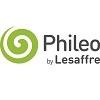
Content sponsored by:
Phileo by Lesaffre
New Program Meat profit offers €18.66/head ROI benefit
Published: September 17, 2019
Source : Phileo By Lesaffre

A new Phileo by Lesaffre program for Meat profit is launched in Europe at SPACE today, September 11th, to help farmers improve herd profitability and the health of their beef cattle by paying more attention to the nutritional requirements of their animals.
Marcq-en-Baroeul, France (September 11, 2019) – Driven by Phileo’s development of three yeast-based health, stress and nutritional solutions, the new program is designed to help farmers focus on the key periods of beef cattle production when feed efficiency, growth performance and meat quality require priority attention.
“Efficient beef production centres on two main areas, breeding and finishing,” said Dr. Valentin Nenov, Ruminants Species Manager of Phileo. “As part of this process, most weaned beef calves are transferred from their original breeding farm to a finishing unit, sometimes travelling a substantial distance between the two locations”.
“This can involve considerable stress, both during the travel itself and for the first few days and weeks after the calves arrive at the finishing unit. During this time, bovine respiratory disease (BRD) is by far the most common disease in receiving beef cattle and may have a huge impact on feedlot economics.
“Our Meat profit program has been developed to reduce livestock stress during this critical period while also equipping finishing animals with the nutritional resources to enable them to maximise feed efficiency, growth and end-product meat quality.”
The three key products on which the Meat profit program is based are Actisaf®, Safmannan® and Selsaf®.
Diet supplementation with Actisaf® and Safmannan® during the receiving/conditioning period, when animals first arrive on the finishing unit, has been shown in trials to mitigate the detrimental effect of stress.
Study evidence, for example, shows that rectal temperature and cortisol levels were lower in calves in the Actisaf® and Safmannan® group than in a comparative control group. Feed intake was also found to be higher in supplemented animals throughout the receiving period.
Trials with Selsaf®, meanwhile, showed a reduction in sensitivity to oxidative stress after a stressful event, such as transportation between farms, while the immune response of supplemented animals to vaccination was improved.
Selsaf® was also found to complement the enhanced immunity effects of Actisaf® and Safmannan®.
Actisaf®, Safmannan® and Selsaf® were, in addition, found to have synergistic effects in disease prevention, with Safmannan® helping to improve general health and reduce excessive responses to subsequent immune challenge, while Selsaf® minimized the effect of immune over-stimulation.
In relation to enhancing growth rates during finishing, which is obviously important for maximising production profitability, trials in various countries with Actisaf® demonstrated that supplementation with the product boosted performance, including ADG and FCR, which made the finishing process more efficient and reduced feeding costs.
Selsaf® also had a beneficial impact on the visual appeal of meat produced from supplemented animals, significantly improving meat appearance and having a more beneficial effect on shelf life than sodium selenite.
Finally, judged according to number of BRD cases, health, productivity and return on investment (ROI), the Program Meat profit, in which animals were only supplemented for the three products for 30 days, showed substantial gains over a control group of non-supplemented animals.
On BRD, for example, the control group of 487 animals, suffered 372 BRD cases, resulting in a treatment cost of €16.04 per head. The Program Meat profit group, consisting of 549 animals, had just 334 BRD cases and a final treatment cost of €12.77 per head. This left the Program Meat profit group with a net health gain over the control group of €3.27 a head.
Compared according to productivity, meanwhile, across a 186-day trial, the Program Meat profit group animals achieved an average daily gain (ADG) of 1049 g/head, against the control group’s ADG of 1018 g/head. This gave the Program Meat Profit group a final performance gain worth €15.39 a head.
Combining both these results meant that the Program Meat profit group had a ROI gain over the control group of €18.66 a head.
Source
Phileo By LesaffreRelated topics:
Mentioned in this news release:
Phileo by Lesaffre
Recommend
Comment
Share

Would you like to discuss another topic? Create a new post to engage with experts in the community.
